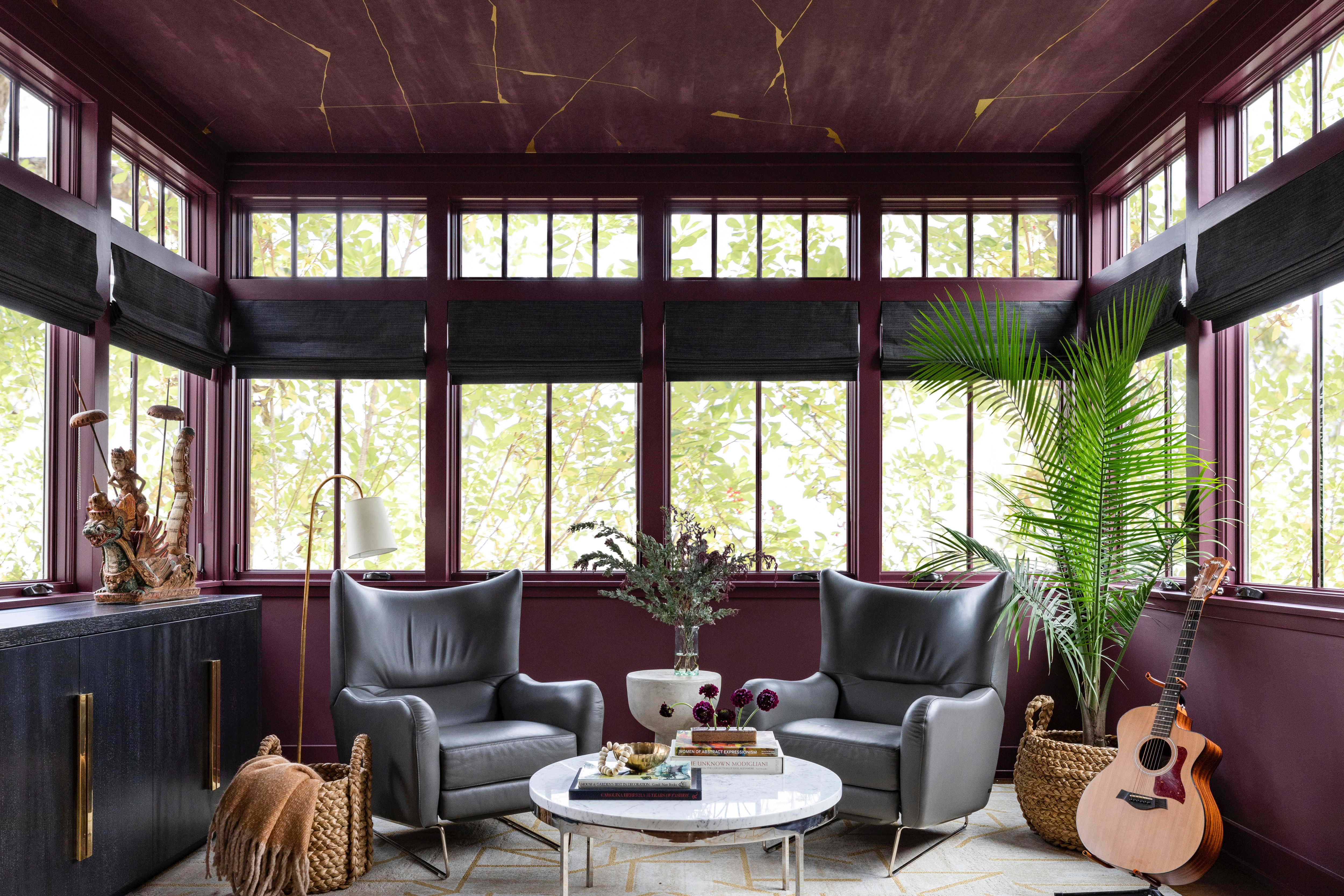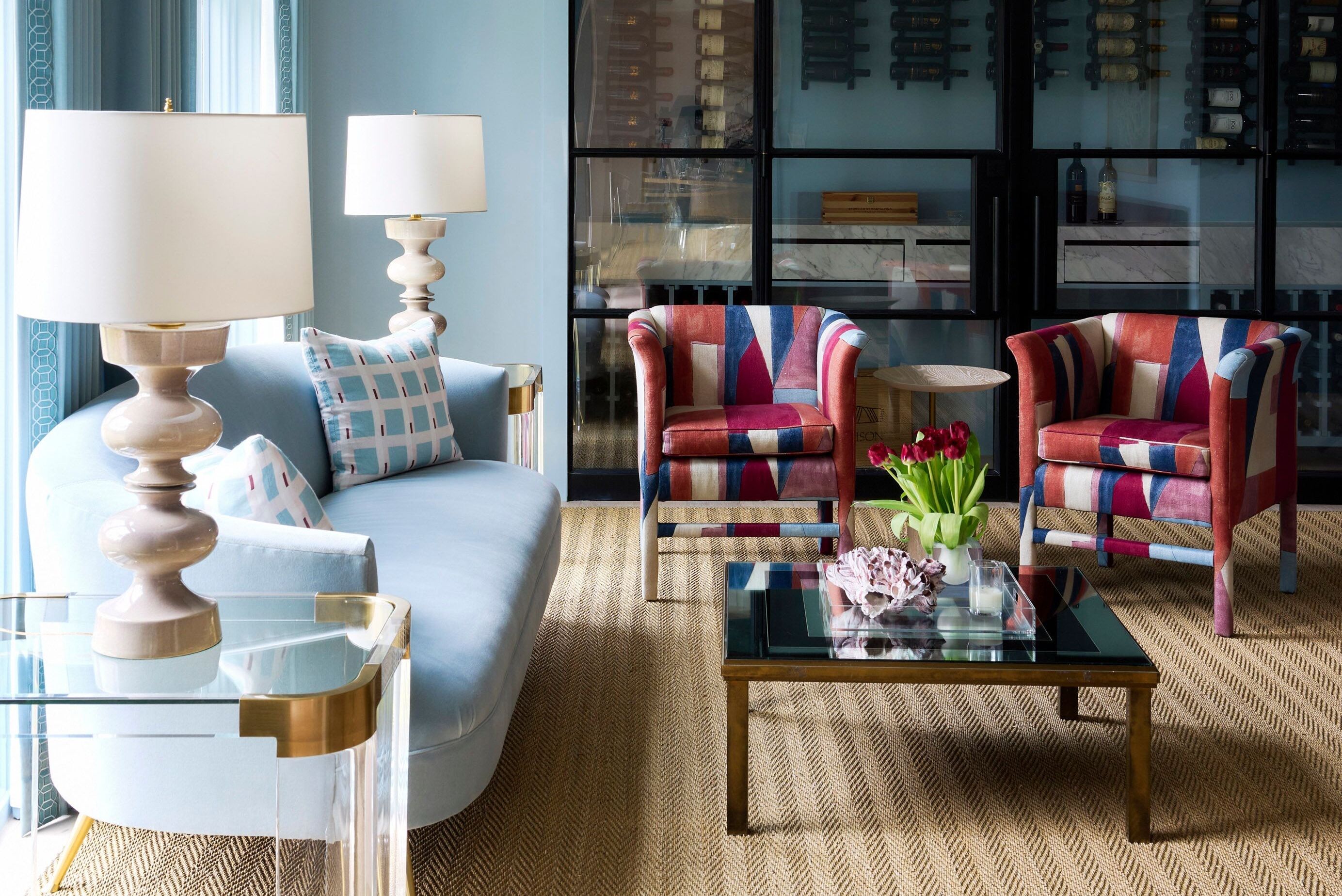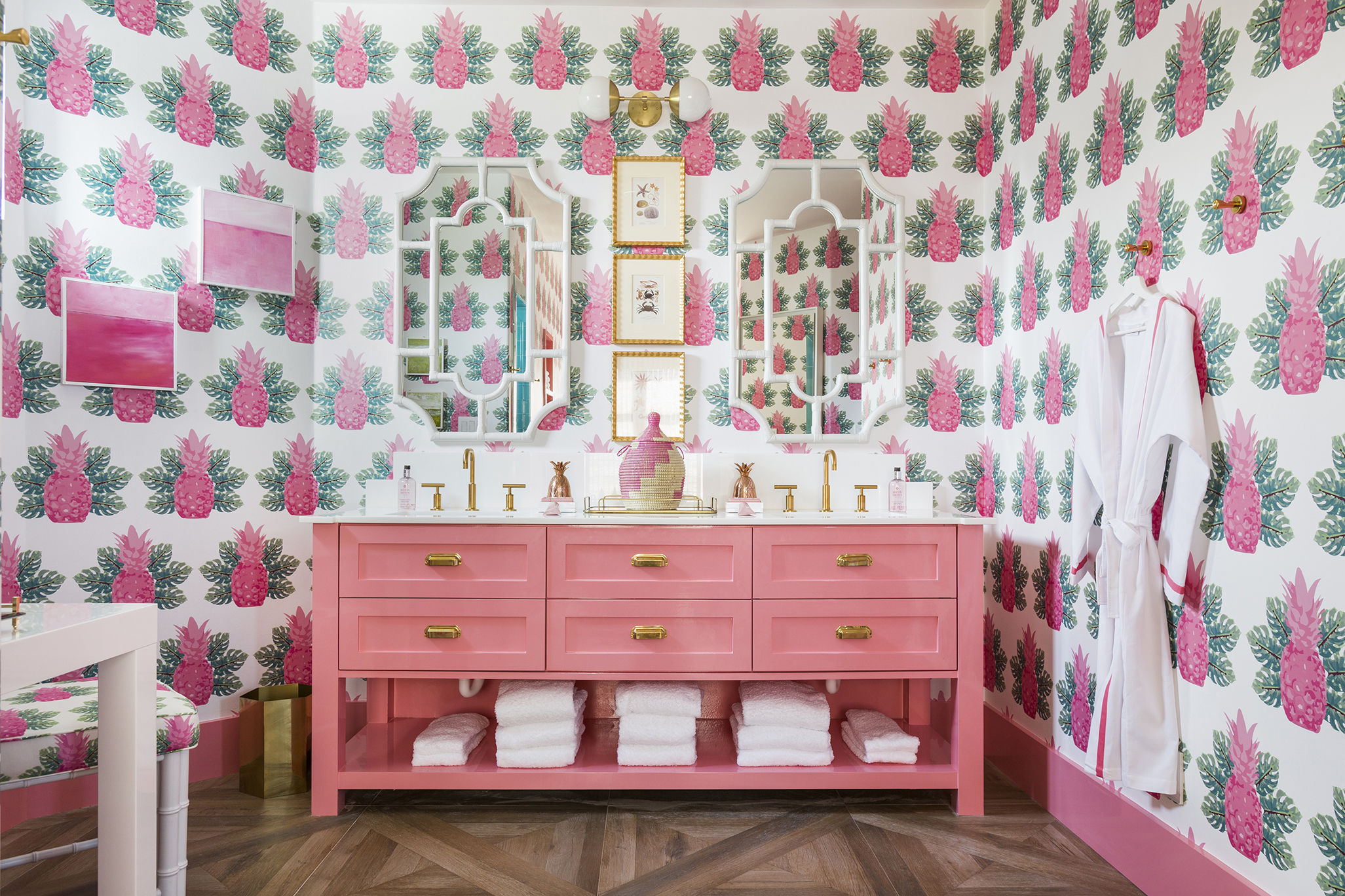Wallpaper Turns Rooms into ‘Jewel Boxes’

Connie LeFevre is positively giddy about new products arriving in her Fabric House showroom, where she sells fabric and wall coverings to interior designers and homeowners alike.
“I’m waiting for some new stuff to come in, it’s handmade paper made from the waste of pineapples and bananas. It’s really exciting what technology is letting us do,” she says, noting that in addition to traditional “paper” wallpaper and improved vinyls, manufacturers are making wall coverings out of wood, mushrooms, and recycled windshield glass.
Her Fabric House showroom, near her Design House furniture showroom at the Houston Design Center in northwest Houston, carries more than 75 wallpaper lines from all over the world, including high-end makers such as Versace, Armani Casa, and Thibaut, and mainstream brands such as York, Candice Olson, and Wallquest.

The wave of popularity for wallpaper that began a handful of years ago is even stronger now, as new materials and technology improve both the look and durability of existing wall coverings. It also allows new offerings such as wallpapers embedded with LED lights, with the papers literally plugging into an electrical outlet and turning on and off with a switch or remote control.
Vinyl wallpapers, once considered low budget and cheap-looking, are now frequent choices for even discriminating residential designers. Manufacturers have made the patterns more precise, colors more vivid and textures so remarkable that even vinyl grasscloth has to be seen and touched to be appreciated.
At the same time, there’s renewed interest in some older patterns. Back in the mid-1800s in Victorian England, wallpaper was popular among all classes. William Morris was an artist, poet, and entrepreneur—a leader in the Arts & Crafts movement in Britain—who wanted to make wallpaper for the middle classes using hand-cut woodblocks and mineral-based dyes.
His first pattern was “Trellis” in 1862; throughout his life, he produced dozens more. The company he started in the 1860s still exists and sells his patterns in wall covering and fabric. His “Pimpernel” design, which he used in his own dining room, was one of his most popular and is still highly sought after in the UK and here in the United States.
Many of his patterns and color choices are found in nature, with leaves, vines, birds, and flowers, appealing to homeowners who want a classic look with a little color. Dozens of knockoffs offered by competing brands are referred to as “Morrisonian” in style.

Image: Courtesy Connie LeFevre
Bellaire-based interior designer Laura Manchee of Laura Manchee Designs says that Morris’s 150-year-old designs have the warmth that many want to put back in their homes.
“We just went through a whole period of gray and we’re moving back to a more classic environment. William Morris and his creations really speak to that,” Manchee says. “He has nature-inspired scenes and colors. I’m happy to see people revisiting the past.”
Manchee uses wallpaper in most of her projects. She says the right wall covering can “turn a room into a little jewel box.”
“Even if a client is bringing their existing furnishings, putting something different on a wall can spruce up what they had before,” Manchee says. “If you want to bring color and texture to a room, we can add it to a feature wall.”
She used a delicate pink pattern in a nursery and cork with metallic backing in a living room. A blue floral pattern on an office ceiling was perfect for a woman who wanted something that wouldn’t distract her.

Technology has improved products such as grasscloth, which can be made in a more refined way than the chunky midcentury offerings, though those are still out there, too. Shoppers can find vinyl versions tough enough to tolerate the humidity and moisture of bathrooms.
“The new vinyls have really excelled. It’s sort of like porcelain tiles. At first they all looked printed and they worked in commercial spaces to attain a certain fire rating,” Manchee says. “Now they’re really great-looking. They’re calmer and the dye lots are more consistent and more monochromatic.”
Custom work is popular, too, with designers and homeowners asking for wallpaper in different colors and scales, sometimes turning beautiful landscape scenes into full-wall murals or blowing up a single flower bloom to cover a wall.

Designer Lynne T. Jones grew up in a farmhouse in West Texas, and the first time she visited the home of an artist there, she fell in love with her blue grasscloth wallpaper. “I had never seen anything like that in my life,” Jones says, crediting the woman for inspiring her to become an interior designer.”
Jones recently finished a powder bathroom project in Jersey Village, where she added wallpaper.
“It has texture and is a bit like grasscloth but more structured. It’s so beautiful, it’s like having art on the walls,” Jones says. “My client told me she just loves sitting in her pretty bathroom to look at that wallpaper.”




